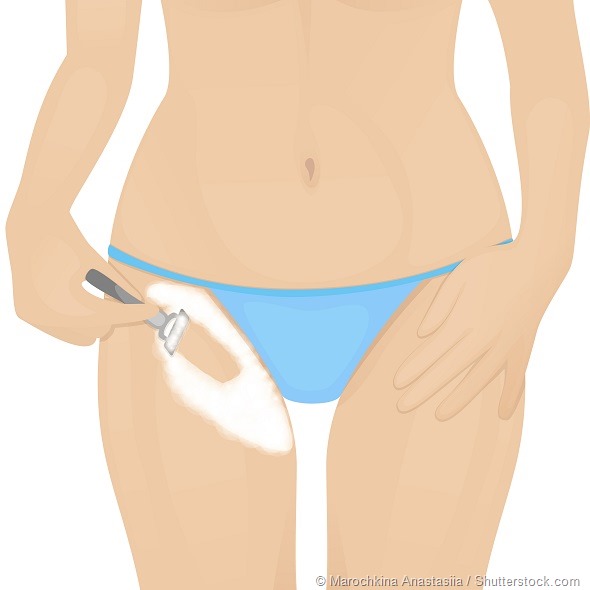Removing or trimming pubic hair is associated with an increased risk of contracting a sexually transmitted disease, according to a study published in Sexually Transmitted Infections.
The association appears to be strongest among people who intensively and frequently groom their pubic hair, a practice referred to as “extreme grooming” in the study.

Researchers Benjamin Breyer (University of California, San Francisco) and colleagues suggest that small tears (microtears) in the skin as a result of shaving or trimming may increase the likelihood of infection taking hold.
The findings come from a survey of 7,580 (56% men) American adults, aged 18 to 65 years, who answered questions about the intensity (complete removal or trimming) and frequency (daily through to annually) of their grooming. Respondents also provided information about how many sexual partners and STIs they had had.
People who removed all their pubic hair more than 11 times per year were classed as “extreme groomers,” while those who trimmed daily or weekly were classed as “high frequency” groomers.
Seventy-four percent of the participants said they had groomed their pubic hair at some point, with 17% classifying as extreme groomers, 22% as high frequency and 10% classifying as both.
Overall, groomers were more likely to be younger, to have had more sexual partners and to be more sexually active than non-groomers. Among extreme groomers, the number of sexual partners was higher than for any other category of groomer.
After adjustment for age and lifetime number of sexual partners, any category of grooming was associated with an 80% increased risk of STI infection, compared with not grooming. The extent of this risk was also linked to how intensively or frequently people groomed, with extreme and high frequency groomers being three to four times more likely to have had an STI, compared with non-groomers. This was particularly the case for infections that arise through skin-to-skin contact.
To explain the results, Breyer and team suggest that microtears in the skin after grooming may increase susceptibility to infections that are spread through skin-to-skin contact such as human papilloma virus (HPV) and herpes.
The authors say that further researcher is needed to confirm and explain their findings, but that irrespective of the underlying mechanisms, a better understanding of the relationship between grooming and STIs may be useful for STI risk reduction.
For instance, if our positive findings reflect a statistical correlation between grooming and STI acquisition, this information could be used to target STI risk prevention,” they suggest.